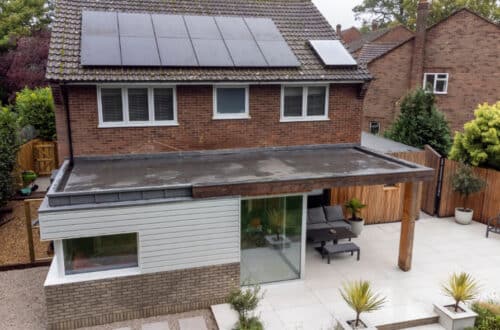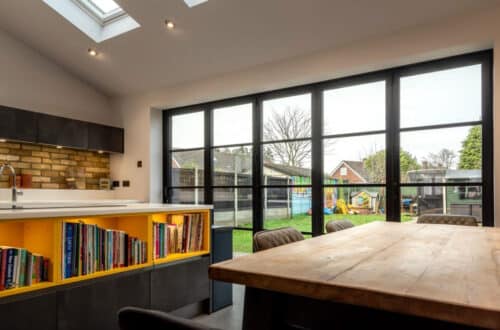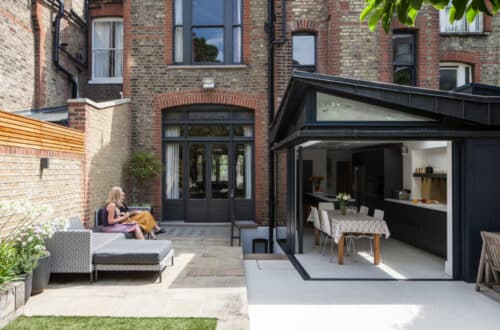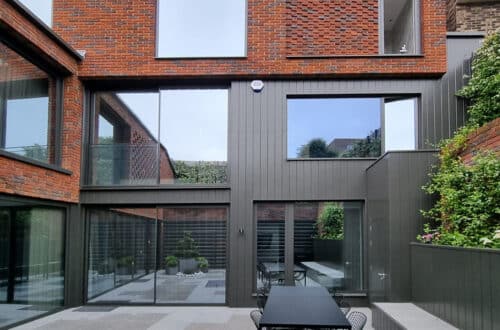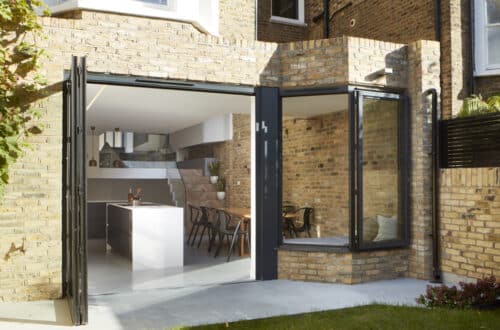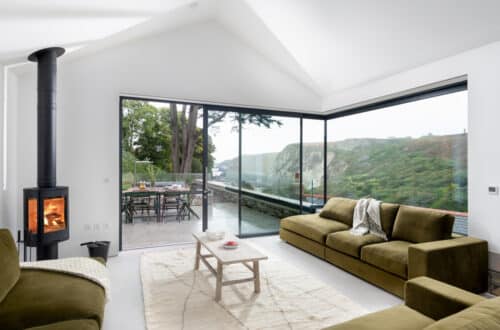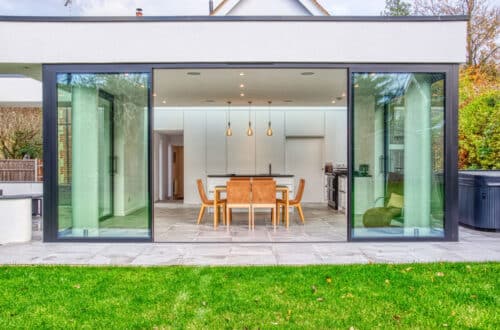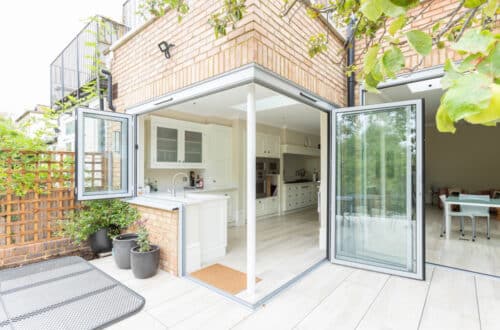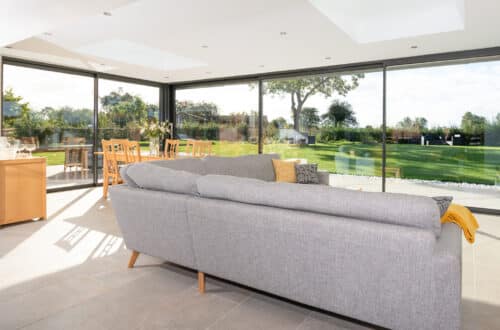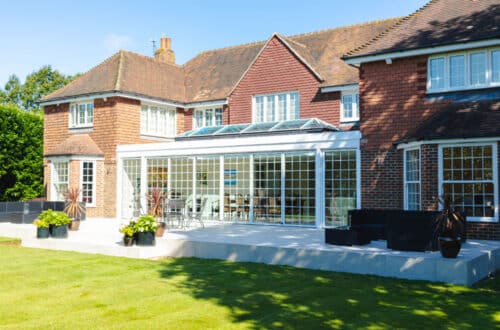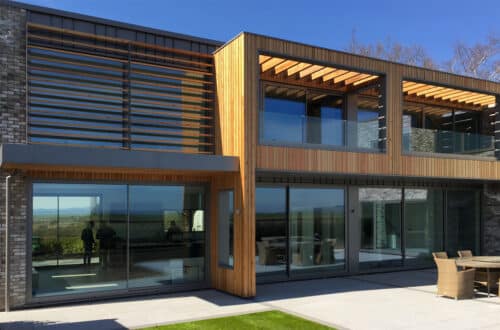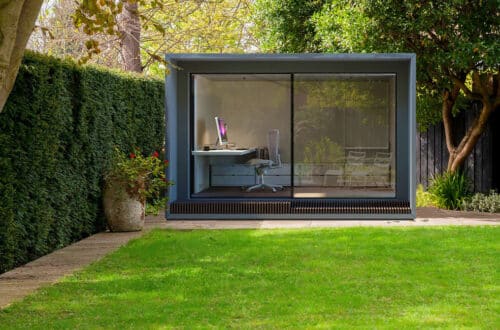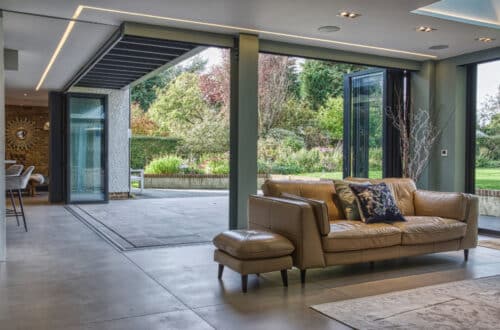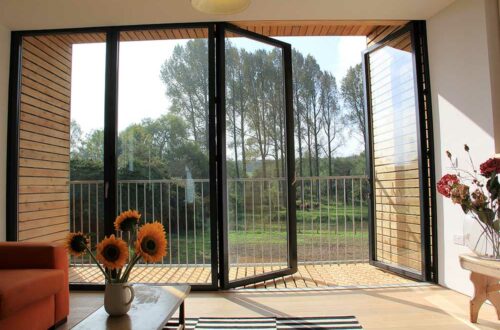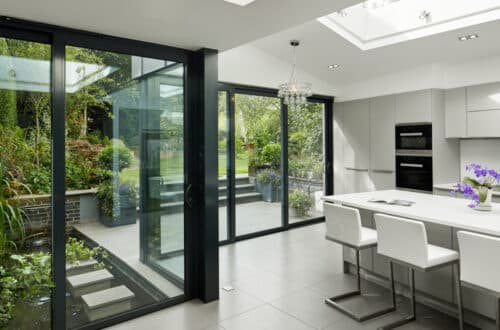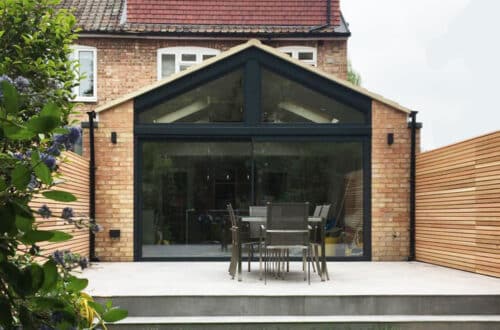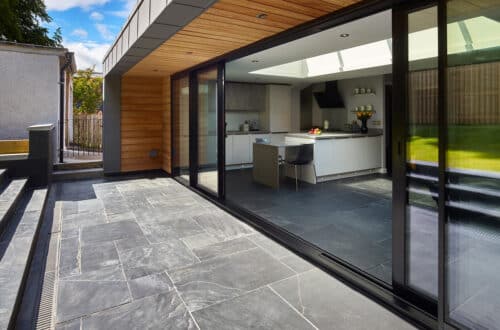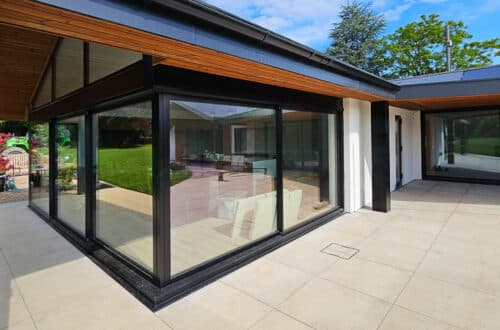Weather tightness of doors – what you should know
Help & Advice: Weather tightness of doors – what you should know
Weather tightness of doors – what you should know
Weather performance – an introduction
Unlike thermal performance, there is no minimum standard required under Building Regulations for weather performance and as a result the range of performance across various door systems and manufacturers varies greatly.
When we talk about weather performance we are looking at the protection that doors offer from drafts (air permeability), rain (water tightness) and wind (wind load). Every set of door on the market should be tested, but with no minimum standards required it is the test figures themselves that offer the best indication of the quality and performance of the systems.
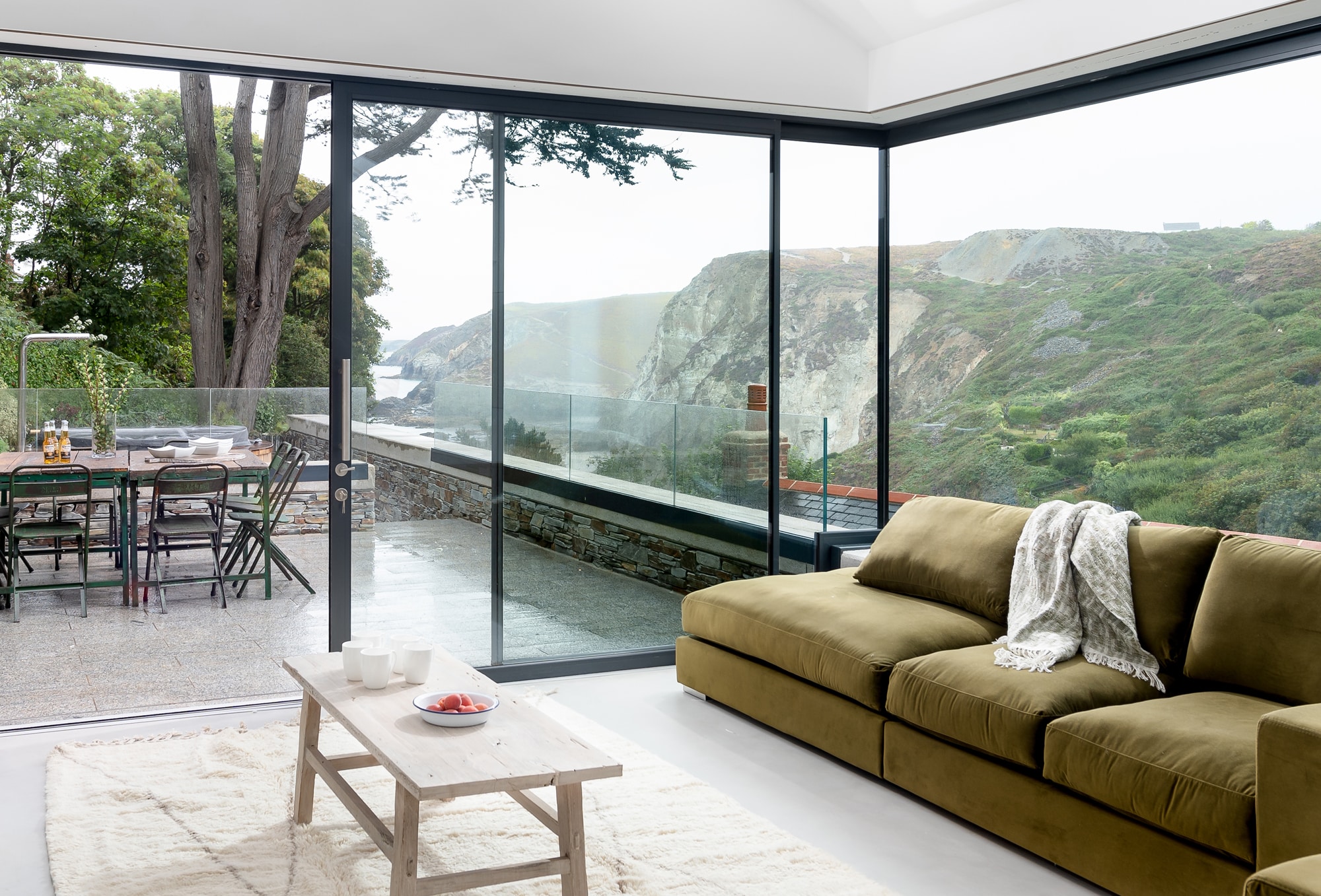
How are doors and windows tested?
The doors are tested in a laboratory by an independent testing house. The tests are physical tests of the doors and windows in a controlled environment, where they are subjected to air and water at pressure. The tests are standardised so that every door is subjected to the same criteria, regardless of which laboratory tests them. For air permeability the British Standard is BS EN 12207, for water tightness it is BS EN 12208 and for wind load BS EN 1027.
The products are tested, with the air or water pressure increased by 100 Pascals at a time until the system is no longer air tight or water tight. The higher the pressure the products can withstand the better protection they offer.
Are U-values and weather performance not the same?
Whereas thermal performance, measured as a U-value, is a theoretical calculation of the energy efficiency of a product and how much heat is retained by the glass and frame, the weather performance is an actual physical test of the products’ capabilities. This physical tests measure not only the glass and frame, they also test the seals and the overall construction of the product – and as such they are a great indication of the quality and workmanship of the products.
Does every set of doors from a system achieve the same weather performance standards?
No, the weather performance of a particular set of doors is dependent on a number of factors including the size of the doors, the track they are fitted with and how the doors are configured. It is not practical to test every single set of doors that are manufactured before they are installed so a sample set that fit into a standardised testing rig are sent to be tested. This means that when we quote the performance of a particular product we are quoting the figures that have been achieved when tested, not necessarily the figures that your door system in your home will achieve.
I live in a rural or coastal location, what can I do to maximise the protection the products offer?
There are a number of design options that you can incorporate into your doors to maximise the protection they offer from wind and rain.
For sliding doors:
- fixed panels, by the very nature of being fixed, offer better weather performance that opening ones – so opting for a fixed panel rather than having all panels sliding will increase the performance of the doors.
- having cover plates over unused bits of top and bottom tracks and side jambs will reduce protect the edges of the panels where they seal against the outer frame.
- a twin track is better than a triple track, so opting for a 3-panel system on twin track with a fixed plant-on panel (rather than a 3-panel system on a triple track) will reduce the depth of the track and therefore offer more protection
- Opting for rubber gasket rather than brush pile where the horizontal frames of the door overlap will increase the protection from drafts and rain.
For bifold doors:
- Opting for a fully weathered track where the panels of the door form a double rebated seal against the track will increase the protection, compared to a low-threshold track where just the inner face of the door creates a seal
- Choosing a system with a continuous gasket that extends around the entire frame of the door will offer better protection
- Avoid doors with larger gaskets, these may offer protection from little fingers as the doors close but they are less likely to form an effective weather seal to keep out drafts and rain.
Categories of Air Permeability according to EN 12207
|
Class |
Test Pressure |
Max Air Permeability permitted limits |
|
|
|
Pa |
Sealing |
Window/Door area |
|
1 |
150 |
12.5 |
50 |
|
2 |
300 |
6.75 |
27 |
|
3 |
600 |
2.25 |
9 |
|
4 |
600 |
0.75 |
3 |
For the water tightness testing again a sample set of doors are fixed to a testing rig and water is forced through a nozzle at the doors to replicate driving rain at increasing pressures for longer time periods.
The classes for EN 12208 range from class 0 (the lowest) to class 9 (the highest) with the highest class indicating that the door system withstood 600Pa of water pressure for 55 minutes.
Categories of Water Tightness according to EN 12208
|
Class |
Test Pressure |
Spraying Time |
|
|
Pa |
Minutes |
|
1 |
0 |
15 |
|
2 |
50 |
20 |
|
3 |
100 |
25 |
|
4 |
150 |
30 |
|
5 |
200 |
35 |
|
6 |
250 |
40 |
|
7 |
300 |
45 |
|
8 |
450 |
50 |
|
9 |
600 |
55 |
Become an accredited distributor
If you are in the glazing trade join our distributor programme today and you’ll receive discounts on select showroom models, the choice of over 40 products for your inventory, and training and technical support directly from SUNFLEX UK.
Join

